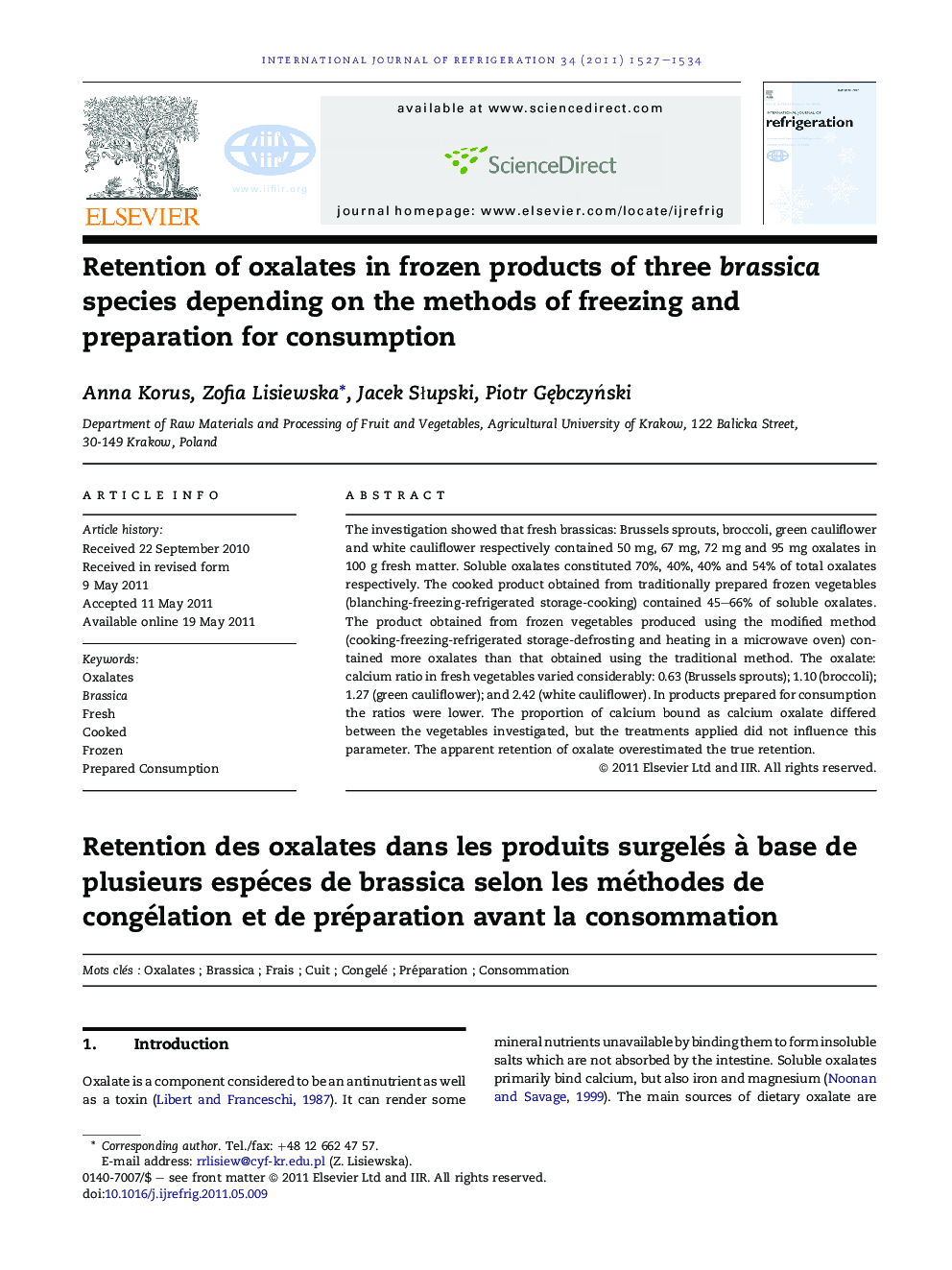| Article ID | Journal | Published Year | Pages | File Type |
|---|---|---|---|---|
| 787247 | International Journal of Refrigeration | 2011 | 8 Pages |
The investigation showed that fresh brassicas: Brussels sprouts, broccoli, green cauliflower and white cauliflower respectively contained 50 mg, 67 mg, 72 mg and 95 mg oxalates in 100 g fresh matter. Soluble oxalates constituted 70%, 40%, 40% and 54% of total oxalates respectively. The cooked product obtained from traditionally prepared frozen vegetables (blanching-freezing-refrigerated storage-cooking) contained 45–66% of soluble oxalates. The product obtained from frozen vegetables produced using the modified method (cooking-freezing-refrigerated storage-defrosting and heating in a microwave oven) contained more oxalates than that obtained using the traditional method. The oxalate: calcium ratio in fresh vegetables varied considerably: 0.63 (Brussels sprouts); 1.10 (broccoli); 1.27 (green cauliflower); and 2.42 (white cauliflower). In products prepared for consumption the ratios were lower. The proportion of calcium bound as calcium oxalate differed between the vegetables investigated, but the treatments applied did not influence this parameter. The apparent retention of oxalate overestimated the true retention.
